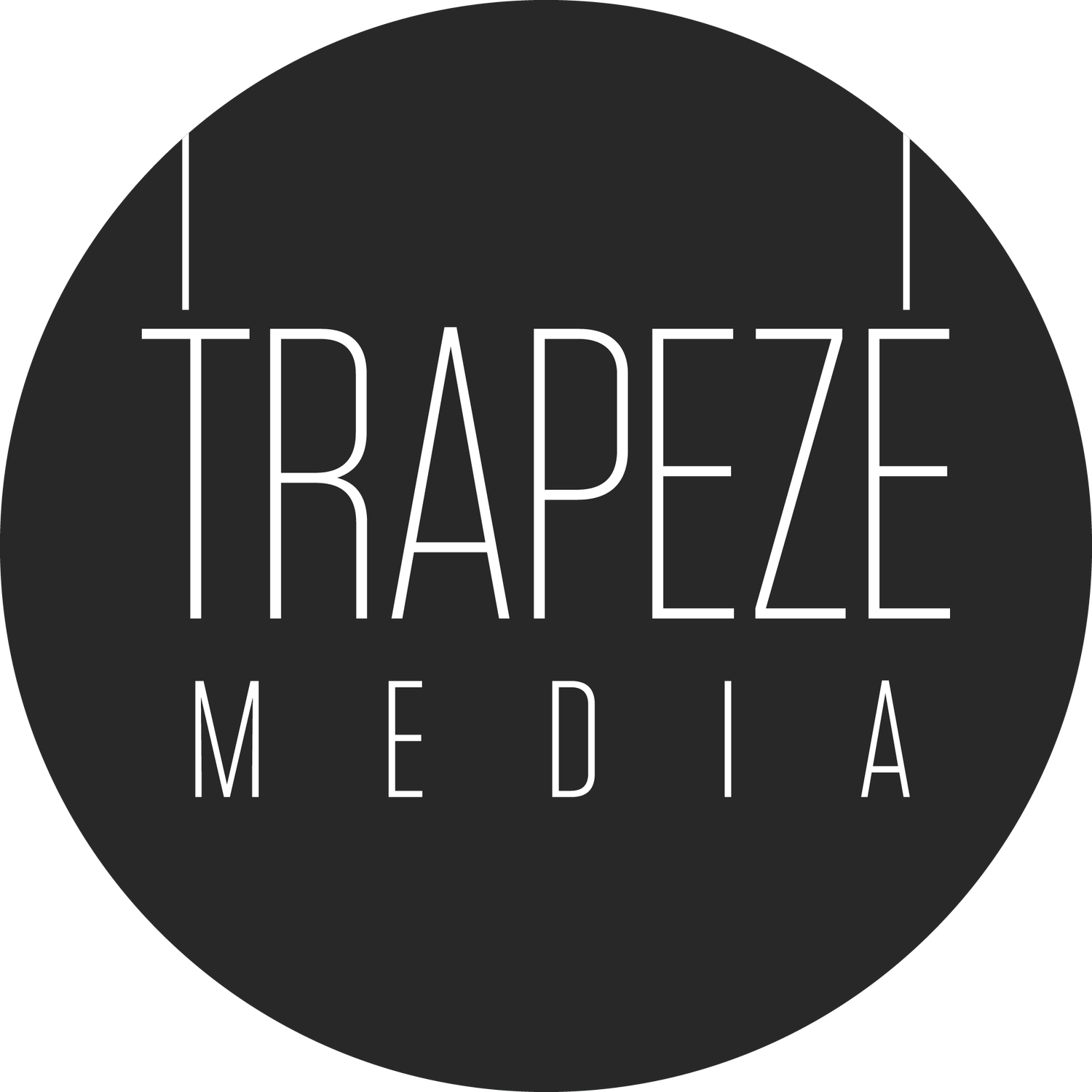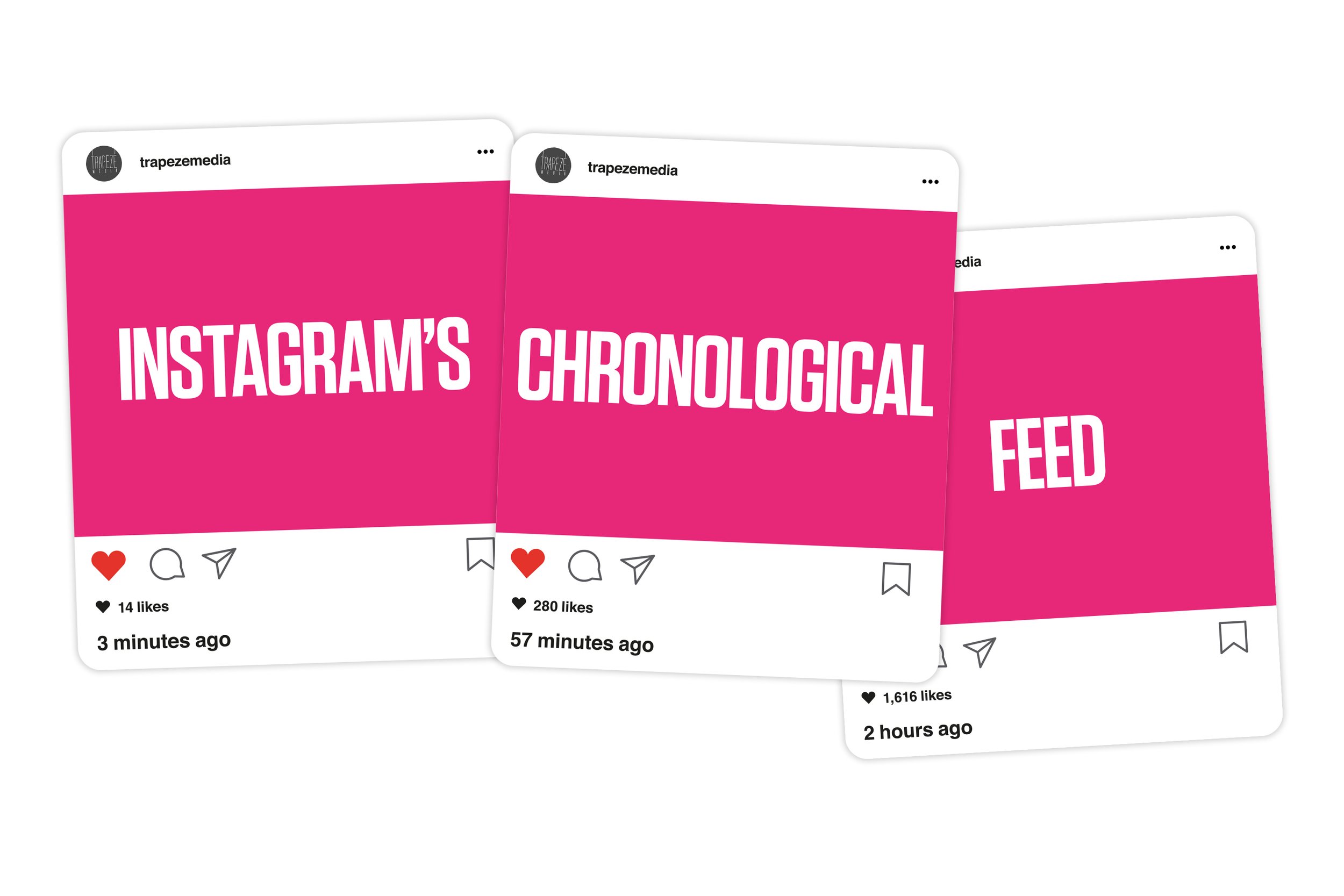What marketers need to know about Instagram’s chronological feed
Six years after introducing an algorithmically-driven feed which shows users content from the accounts they engage with the most at the top, Instagram have released — or, reintroduced — a chronological feed option. Users can now choose to view the most recent photos and videos from everyone they follow first.
Here’s everything marketers need to know.
It’s kinda hidden — probably on purpose
To access the chronological feed, you need to tap the Instagram logo in the top-left corner and select ‘Following’. There’s no in-app announcement about the revived feature. The only sign that the choice is even there is a tiny drop-down arrow.
As we write this on day one of release, there’s also no way to set the ‘recent’ view as the default. Instagram falls back to algorithmic sorting every time you close and reopen the app.
Every social networking platform has introduced an algorithmic feed over the past few years. It makes sense. Showing us what we engage with the most keeps us scrolling. In a way, the algorithm might know us better than we know ourselves!
More scrolling = more ad exposure = more revenue for Instagram. So, companies want us to stick to the algorithmic feed. But what do we want?
Will we actually use the chronological feed?
Though many users have been clamouring for the return of the chronological feed since 2016, upon its re-release, the internet was divided over whether people would actually use it. Will the sequential order feel boring compared to something that’s been trained on years of our tell-all behaviours and interactions?
There’s a difference between what people think they’ll get from a chronological feed and what they’ll actually get. Many users likely expect the same kind of content they currently see, just sorted differently. In reality, they’ll be seeing a lot of posts from accounts they completely forgot they were following.
The perfect feed requires curation. Before the algorithm, we managed that ourselves. Then the algorithm started doing it for us. If a user goes through the effort of unfollowing accounts they’re no longer interested in, their chronological feed may mostly just look like their algorithmically-cherrypicked one.
How the chronological feed will affect engagement
You could fill a library with everything marketers have written about the Instagram algorithm since 2016. It’s mostly been loose correlations drawn from anecdotal data, though. Predictions we make about the impact of the chronological feed are also just informed guesses at this time, but they’re good to consider.
Firstly, you’ll have ‘dormant’ followers (users who’ve not engaged with you for a while) seeing your posts for the first time in months, maybe years. Your brand might be a sight for sore eyes that elicits good memories and intrigue, or it might be a jarring presence which sparks a swift unfollow.
If general housekeeping — checking bio descriptions are up to date, links are working, story highlights aren’t outdated, etc. — isn’t something you do regularly, give the basics of your Instagram profile a once over to ensure it’s ready to welcome back those prodigal fans.
If there’s a small drop-off in net follower growth for a month or two because of ‘returning’ members of your audience deciding they’re no longer interested in your brand, this could be offset by an increase in engagement from the long-term followers who choose to stay.
The return of ‘the best time to post’
Before the algorithm, marketers and businesses leaned a lot on the notion of optimum posting times.
“Breakfast, lunch, and dinner times are good for Facebook and Instagram because it’s when people are looking at their phones.”
“Just after 9am is ideal for LinkedIn because it’s when people get to work and communicate with their professional networks.”
This all went out the window when the algorithm arrived. Even more so when the pandemic had us confused about what day it was.
Now, though, posting content at the ‘right time’ could become strategic again. For a restaurant, posting a breakfast dish during the early hours and cocktails around 5pm may once more be best practice. Followers using the chronological feed will see it at the intended time, and people using the algorithmic one will see it whenever the Instagram gods see fit.
What is the ‘Favorites’ feed?
Instagram users can add up to 50 accounts as ‘Favorites’ and then see just posts from those people/brands in the second feed option under the top-left logo menu: the ‘Favorites’ feed.
When Instagram first unveiled the algorithmic feed in 2016, many businesses scrambled to post instructions on how their followers could turn on notifications so as not to miss their posts. A lot of people considered this a little try-hard, so we’d advise not out-and-out asking your followers to add you to their Favorites!
In Summary
Instagram users can now sort their feeds to show the most recent photos first
It’s not immediately clear how popular the chronological feed option will be
Some followers might see your content on their timelines for the first time in years
This might cause a short-term drop in follower growth, but a long-term rise in engagement rates
The time of day you post will become more important again

